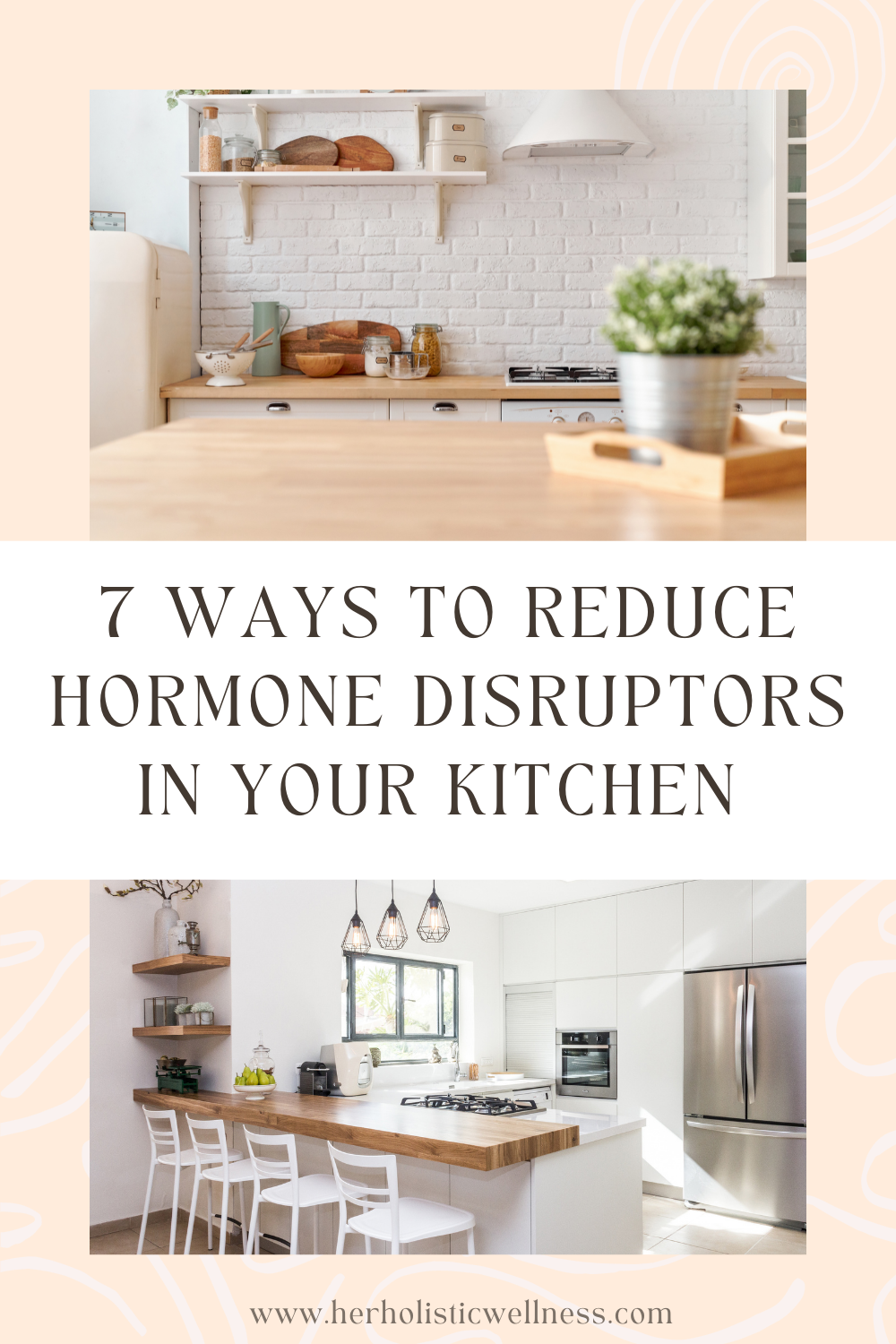7 Ways to Reduce Hormone Disruptors in Your Kitchen
If you’re wanting to make a change in your hormonal health, menstrual health, and/or fertility, its impertative that you evaluate and minimize your exposure to endocrine (hormone) disruptors.
Endocrine disruptors are chemicals which:
· Mimic a natural hormone, fooling the body into over-responding to the stimulus (e.g., a growth hormone that results in increased muscle mass), or responding at inappropriate times (e.g., producing insulin when it is not needed)
· Block the effects of a hormone from certain receptors (e.g., growth hormones required for normal development)
· Stimulate or inhibit the endocrine system and cause overproduction or underproduction of hormones (e.g., an over or underactive thyroid)[1]
The very first step towards taking control over endocrine disruptors is the ability to identify them! Since endocrine disruptors can boost chances of cancer, risk your metabolic health, and mess up your reproductive health, fertility and immunity, it is important to know what they are, assess your exposure to them, and work to reduce your contact so you can reduce your risk of health impact.
Sadly, endocrine disruptors are everywhere. Today, let’s look at your kitchen and identify sources of ED’s there.
TIPS TO REDUCE ENDOCRINE DISRUPTORS IN THE KITCHEN:
1. Start by ditching the plastic containers.
Plastic is being banned around the world as it is highly toxic to human health — store food items in glass containers. Whether you have to store it in the pantry or the fridge; replace your plastic bottles with glass ones.
2. Never heat food in the microwave in plastic containers.
Heat food in ceramic or glass containers. The BPA from plastic containers will leech onto food as it heats and fill your food with this harmful chemical.
3. Cast iron or stainless steel
Cast iron or stainless steel cookware might look old fashion, but it is free of EDs and is very healthy for cooking food. Ditch the non-stick cookware and go old school to get rid of this common source of endocrine disruptors.
4. Drink water in glass, ceramic or stainless steel cups.
Plastics have got to go. Similiar to avoiding heating food in plastics, you also want to avoid drinking water that has been sitting in plastic water bottles or cups to prevent BPA exposure.
5. Go ECO!
Dishwasher detergent may have endocrine-disrupting chemicals. An easy swap are eco friendly natural detergents free from perfumes and dyes.
6. Eat organic.
Conventional produce and meats have exposure to pesticides, insecticides, fungicides, fertilizers, antibiotics, and hormones. Check out my blog on how to save money on organics... there is a way to enjoy organics without breaking the budget! (((Coach – insert link to the blog on saving money on organic groceries)))
7. Remove plastic wraps from things before you store them in the pantry or fridge.
Place them in glass containers. When grocery shopping, a lot of items are packed within plastic cling wraps and containers. As you can see, plastics are a theme for this list. Even when purchasing foods in plastic wrap, make sure to store them in a heathier fashion one you get home.
These are some of the most basic yet essential tips that can help you reduce your exposure to hormone disruptors in your kitchen. Start off by making a few changes at a time and build upon them to help keep your hormones in harmony.
[1] https://www.epa.gov/endocrine-disruption/what-endocrine-disruption

